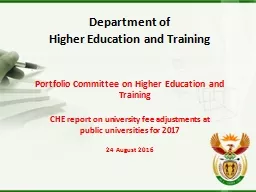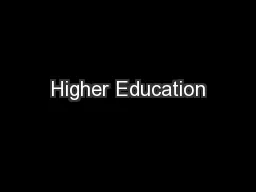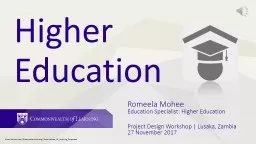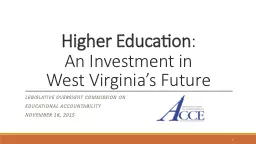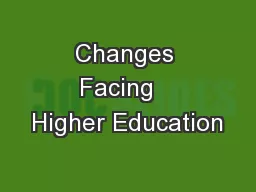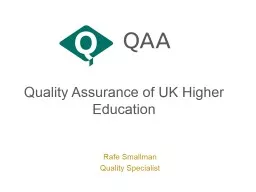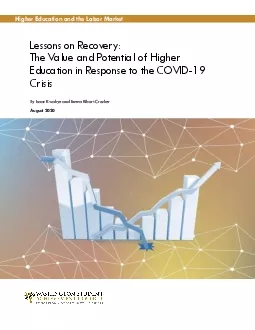PPT-Department of Higher Education and Training
Author : lindsaybiker | Published Date : 2020-08-28
Portfolio Committee on Higher Education and Training CHE report on university fee adjustments at public u niversities for 2017 24 August 2016 BACKGROUND 2 On
Presentation Embed Code
Download Presentation
Download Presentation The PPT/PDF document "Department of Higher Education and Trai..." is the property of its rightful owner. Permission is granted to download and print the materials on this website for personal, non-commercial use only, and to display it on your personal computer provided you do not modify the materials and that you retain all copyright notices contained in the materials. By downloading content from our website, you accept the terms of this agreement.
Department of Higher Education and Training: Transcript
Download Rules Of Document
"Department of Higher Education and Training"The content belongs to its owner. You may download and print it for personal use, without modification, and keep all copyright notices. By downloading, you agree to these terms.
Related Documents

